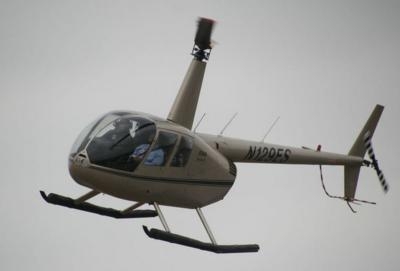Wed, Feb 25, 2015
Aircraft Grounded In Australia After Fatal Accident In New Zealand
The FAA has issues a Special Airworthiness Information Bulletin (SAIB SW-15-08) directed towards owners and operators of Robinson Helicopter Company model R44 and R44 II helicopters which have installed main rotor blades with part number C016-7 of a fatigue crack occurrence, and suggests a preflight check for signs of a fatigue crack on the trailing edge of the blade.

The FAA has received a report from New Zealand of an in-flight failure of the main rotor blade on a Robinson R44 II helicopter which resulted in severe main rotor vibration. The aircraft was difficult to control during the subsequent emergency landing. The New Zealand CAA released Continuing Airworthiness Notice – 62-003 on January 26, 2015 recommending a pre-flight inspection of this area. Robinson Helicopter Company subsequently released R44 Safety Alert C016-7 Main Rotor Blade Crack on February 23, 2015 recommending a preflight visual inspection of the trailing edge of the main rotor blade for any evidence of a fatigue crack initiation.
Australia's Civil Aviation Safety Authority (CASA) issued an emergency airworthiness directive grounding certain Robinson R44 helicopters operating in that country following the New Zealand accident.
The FAA says that at this time, the airworthiness concern is not an unsafe condition that would warrant airworthiness directive (AD) action under Title 14 of the Code of Federal Regulations (14 CFR) part 39.
The FAA says that as part of the daily preflight inspection, the trailing edge of the main rotor blade on the upper and lower surfaces of the blade (a stepladder may be necessary) should be visually checked for any damage which may initiate a fatigue crack. Check in the area shown on the Robinson Safety Alert C016-7 Main Rotor Blade Crack, dated February 23, 2015. If any damage is detected, the blade should be thoroughly examined by a qualified technician prior to further flight. If unusual rotor system vibration is detected in flight, land immediately and have blades examined by a qualified technician.
It is recommended that any positive findings be reported to the Robinson Helicopter Company.
(Image from file)
More News
With Testing Soon Complete, Launch Preparations Begin in Earnest Sierra Space's Dream Chaser has been put through the wringer at NASA's Glenn Armstrong Test Facility in Ohio, but w>[...]
Takeoff Roll The process whereby an aircraft is aligned with the runway centerline and the aircraft is moving with the intent to take off. For helicopters, this pertains to the act>[...]
“We’re proud of the hard work that went into receiving this validation, and it will be a welcome relief to our customers in the European Union. We couldn’t be mor>[...]
"Aircraft Spruce is pleased to announce the acquisition of the parts distribution operations of Wag-Aero. Wag-Aero was founded in the 1960’s by Dick and Bobbie Wagner in the >[...]
IDENT Feature The special feature in the Air Traffic Control Radar Beacon System (ATCRBS) equipment. It is used to immediately distinguish one displayed beacon target from other be>[...]
 Sierra Space Repositions Dream Chaser for First Mission
Sierra Space Repositions Dream Chaser for First Mission ANN's Daily Aero-Term (05.10.24): Takeoff Roll
ANN's Daily Aero-Term (05.10.24): Takeoff Roll Aero-News: Quote of the Day (05.10.24)
Aero-News: Quote of the Day (05.10.24) Aero-News: Quote of the Day (05.11.24)
Aero-News: Quote of the Day (05.11.24) ANN's Daily Aero-Term (05.11.24): IDENT Feature
ANN's Daily Aero-Term (05.11.24): IDENT Feature



